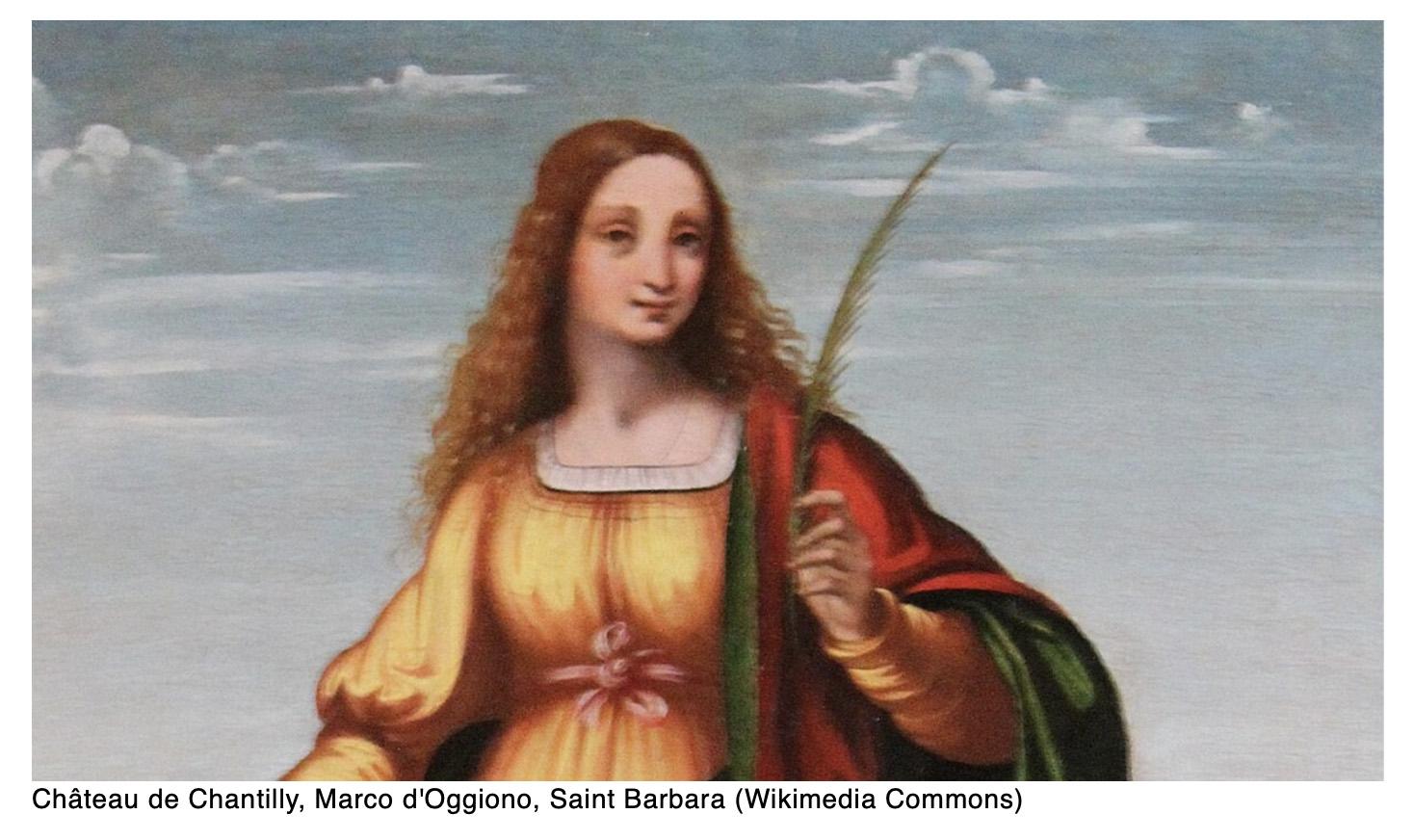But the tower didn’t prevent God from reaching Barbara, who converted to Christianity without having ever interacted with any Christian from the time.
Eventually Dioscurus found out about his daughter’s conversion, and, like the great dad he clearly was, attempted to kill her in his rage. Barbara managed to escape from her father to the nearby hills, but a shepherd with a snitching problem returned her to her murderous father.
Attempting to cement his place as the worst dad of all-time, Dioscurus took Barbara to the local Roman prefect and told him of her heretical rejection of paganism. Barbara was then sentenced to death for her crimes, and surprise surprise, Dioscurus was given leave to behead his daughter. He gladly removed it and started to head home.
But Barbara got her revenge.
In a call for fire that can only be described as mythic, both Dioscurus and the Roman prefect were struck down by lighting and completely consumed into ashes, shortly after Barbara’s death.
Over time as the martyr’s story spread, she quickly became associated with protection from lighting and sudden fires.
When cannons showed up in Europe from China, in the 14th century A.D., the dangers of these new weapon of war quickly led medieval cannoneers to search for some other-worldly protection.
The by-now canonized St. Barbara’s association with lightning and fire made her the natural choice among cannoneers.
Her association with cannons and gunpowder was so close that santabárbara, her Spanish name, became the word for powder magazine.
The lightning motif is still commonly used within the artillery community, Rachal Smith, the executive director for the U.S. Field Artillery Association told Marine Corps Times.
“Field artillery is often compared to lighting or thunder, a lot of your unit nicknames are lightning or thunder,” Smith said.
Whether it is the Army’s 7th Field Artillery Regiment known as First Lighting or the Corps’ 10th Marines, known as Thunder and Steel, St. Barbara has plenty of lighting and thunder to throw around these days.
The U.S. Field Artillery Association still hands out two awards, named for the saint to deserving members from the Army and Marine Corps’ field artillery community.
The Honorable Order of Saint Barbara is for, “highest standards of integrity and moral character; displayed an outstanding degree of professional competence; served the United States Army or Marine Corps Field Artillery with selflessness; and contributed to the promotion of the Field Artillery in ways that stand out in the eyes of the recipient’s seniors, subordinates and peers alike,” according to the organization’s website.
While the Ancient Order of Saint Barbara, “is reserved for an elite few whose long-term dedication to the Field Artillery has embodied the spirit, dignity and sense of sacrifice and commitment epitomized by Saint Barbara,” the website reads.
The Marine Corps’ 11th Marine Regiment still held a celebration on the saint’s day of Dec. 4, despite the ongoing pandemic.
“The festivities are likely to look a bit different this year in order to ensure proper mitigation of cbut we will still make every effort to honor our traditions in a safe manner,” 1st Lt. Cameron Edinburgh, a spokesman for the 1st Marine Division said in a statement.
For 10th Marines the pandemic forced the regiment to push the celebrations back to March, though the exact plans have not been solidified, 1st Lt. Dan Linfante, a spokesman for the 2nd Marine Division said.
In the past Marines have celebrated the day by having a field meet, which included batteries competing against each other with trebuchets. Ironically it’s an artillery piece that does not use gunpowder and does not have the protection of St. Barbara.




